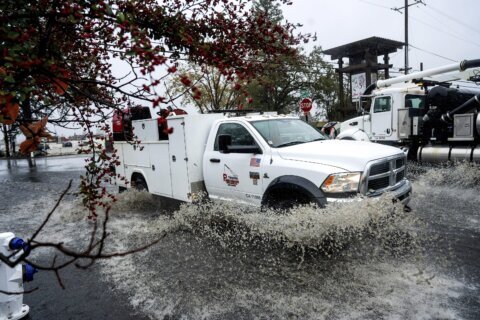Swimming has been off-limits in the long-polluted Seine River in Paris for more than a century. So with Olympic swimming events on tap for the river, the city poured in $1.5 billion (1.4 billion euros) to try to clean it up.
With the Paris Games underway, officials are keeping a close eye on water quality. Athletes could feel health effects from swimming in a river with higher-than-accepted levels of E. coli or other bacteria.
Here are key things to know:
What made the Seine so dirty?
Paris, like many old cities around the world, has a combined sewer system, which means that the city’s wastewater and stormwater flow through the same pipes. With heavy or prolonged periods of rain, the pipes can get overwhelmed and untreated wastewater flows into the river instead of to a treatment plant.
That could mean bacteria, viruses or parasites get in the water, said Dr. Nicole Iovine, an infectious disease specialist at University of Florida Health in Gainesville. And it’s not just from human waste.
“It’s also the wildlife — rodents, for example. When it rains a lot, all of that from those animals can end up in the Seine,” she said.
What did Paris do to clean up?
To prepare for the Paris Games, the city built a giant basin to capture excess rainwater and keep untreated waste from flowing into the river, renovated the sewage system and upgraded water treatment plants.
Heavy rain may still swamp the system.
“The city of Paris has done a lot of work to clean up the Seine, but they can’t control the weather,” Iovine said.
The rain over the Olympics opening weekend filled up 20% of the basin, so the contamination levels afterward likely came from wastewater upstream, city officials said.
What germs are in the river?
Water quality tests in June revealed unsafe levels of E. coli bacteria, though results in early July showed improvement. E. coli is found in human and animal digestive tracts and waste. Most strains aren’t harmful, Iovine said, but high numbers can indicate dangerous bacteria.
A monitoring group does daily tests at four spots for E. coli as well as enterococci bacteria, which can signal fecal matter and potentially disease-carrying germs.
The World Triathlon Federation has deemed E. coli levels beyond 900 colony-forming units per 100 milliliters are unsafe.
It’s not a “magic” number though, Iovine said, and officials likely take into account additional factors — like the weather — when making decisions about the water quality.
On a sunny day, the sun’s ultraviolet rays can kill the bacteria and lower levels.
What happens when you swim in contaminated water?
Swimming in water with unsafe levels of bacteria can lead to an upset stomach and intestinal problems. Swimmers may inadvertently swallow the water or pick up infections through open cuts.
Even a mouthful of contaminated water can lead to diarrhea, and germs can cause illnesses such as infections in the urinary tract or in the intestines, or in the worst-case scenario, life-threatening sepsis.
“The athletes are young, and they’re in the best shape of anybody, so they’re gonna be more resilient than many of us,” Iovine said. “But that doesn’t mean that they can’t get sick from these things.”
___
Bose reported from Jackson, Mississippi. AP reporter Kate Brumback contributed from Paris.
___
The Associated Press Health and Science Department receives support from the Robert Wood Johnson Foundation. The AP is solely responsible for all content.
Copyright © 2024 The Associated Press. All rights reserved. This material may not be published, broadcast, written or redistributed.







